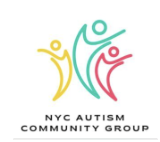Every parent with children on the spectrum should be familiar with the landmark bill that was passed in New York State in 2011 guaranteeing coverage for autism services via insurance. Over 40 states in the US offer insurance coverage for autism services.
An Excerpt from 2011 NYS Insurance Reform Bill:
▪ HEALTH INSURANCE ▪ A. Coverage for Autism Spectrum Disorder A.6305-A and A.8512(Morelle) / S.4005-A and S.5845(Fuschillo) Chapter 595 and 596 of the Laws of 2011 ”Autism spectrum disorder” is a newly designated category for the various developmental disabilities that cause problems with social interaction and communication.
According to the latest version of the Diagnostic and Statistical Manual of Mental Disorders, a continually revised gold standard reference manual published by the American Psychiatric Association, the range of conditions currently included in the category are: autistic disorder; Asperger syndrome, and; Pervasive developmental disorders not otherwise classified (atypical autism). In 2010, the Centers for Disease Control reported that the number of children diagnosed with an autism spectrum disorder (ASD) average 1 in 110, nationwide.
While the New York State Early Intervention Program (EIP) ensures treatment for children under the age of three years, at no cost to the family, these families do not have access to reimbursement for necessary treatments in the commercial insurance markets once their children are no longer eligible for coverage under the EIP. Chapters 595 and 596 of the Laws of 2011 will expand health insurance coverage for the screening, diagnosis, and treatment of ASD for HMOs, individual and group health insurance policies. In addition to strengthening existing provisions, the chapters require insurance plans to cover the screening, diagnosis and treatment of ASD with cost sharing equal to other covered benefits including treatment provided on a supplemental basis outside of the educational setting if deemed to be medically necessary.
Covered treatment for ASD now includes behavioral health treatment including applied behavioral analysis up to $45,000 per year per covered person; psychological care, psychiatric care, and medical care when provided by a licensed health care provider; and therapeutic care including habilitative and non-restorative care, and pharmacy care provided the policy provides coverage for such benefits. Coverage for such services is subject to utilization review and external appeals as well as case management and other managed care provisions. Such coverage provided on a supplemental basis is prohibited from being affected by an individualized family service plan, an individual education plan, or an individualized service plan.
- Early Intervention A.384-B (Paulin) / S.4013-C (McDonald) Chapter 406 of the Laws of 2011 The New York State Early Intervention Program (EIP) is part of the national Early Intervention Program for infants and toddlers with disabilities and their families. First created by Congress in 1986 under the Individuals with Disabilities Education Act (IDEA), the EIP is administered by the New York State Department of Health through the Bureau of Early Intervention. In New York State, the Early Intervention Program is established by Article 25 of the Public Health Law and has been in effect since July 1, 1993.
According to the EIP, in order to be eligible for services children must be younger than three years of age and diagnosed with a disability or developmental delay in one or more of the following areas of development: physical, cognitive, communication, social,emotional, and/or adaptive. Services provided through the EIP by local service providers contracted through the municipality, are first billed to the insurance carrier if the individual has private health coverage and then billed to the respective municipality and reimbursed by the state.
However, the municipality does not always know what services, if any, are covered under an individual’s private insurance and, as a result, facilitating reimbursement from private carriers can be burdensome and may result in lack of payment. Chapter 406 of the Laws of 2011 requires insurers to provide municipalities with information on the benefits available to a child under their parents’ policy upon the insurer’s receipt of a written request and notice from the municipality of a subrogation of rights under the policy from the parent.
Parents must provide the municipality with 4 information on any insurance plan if their eligible child has coverage, as well as a written referral from a primary care provider to document the medical necessity for early intervention services. Claims for EIP services shall also be submitted by the municipality within one hundred fifty days from the date of service.
NYC http://www1.nyc.gov/site/doh/health/health-topics/early-intervention.page
